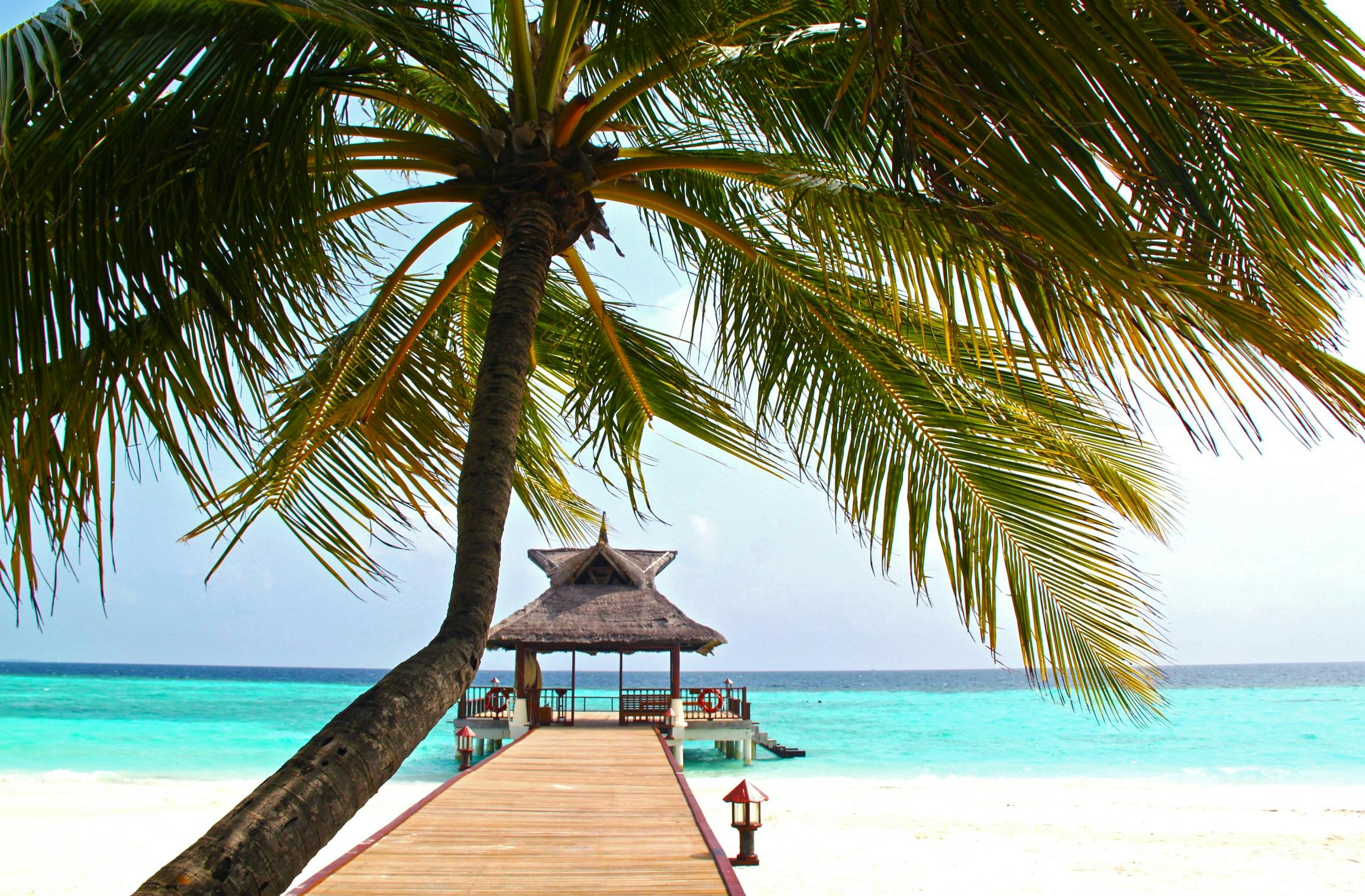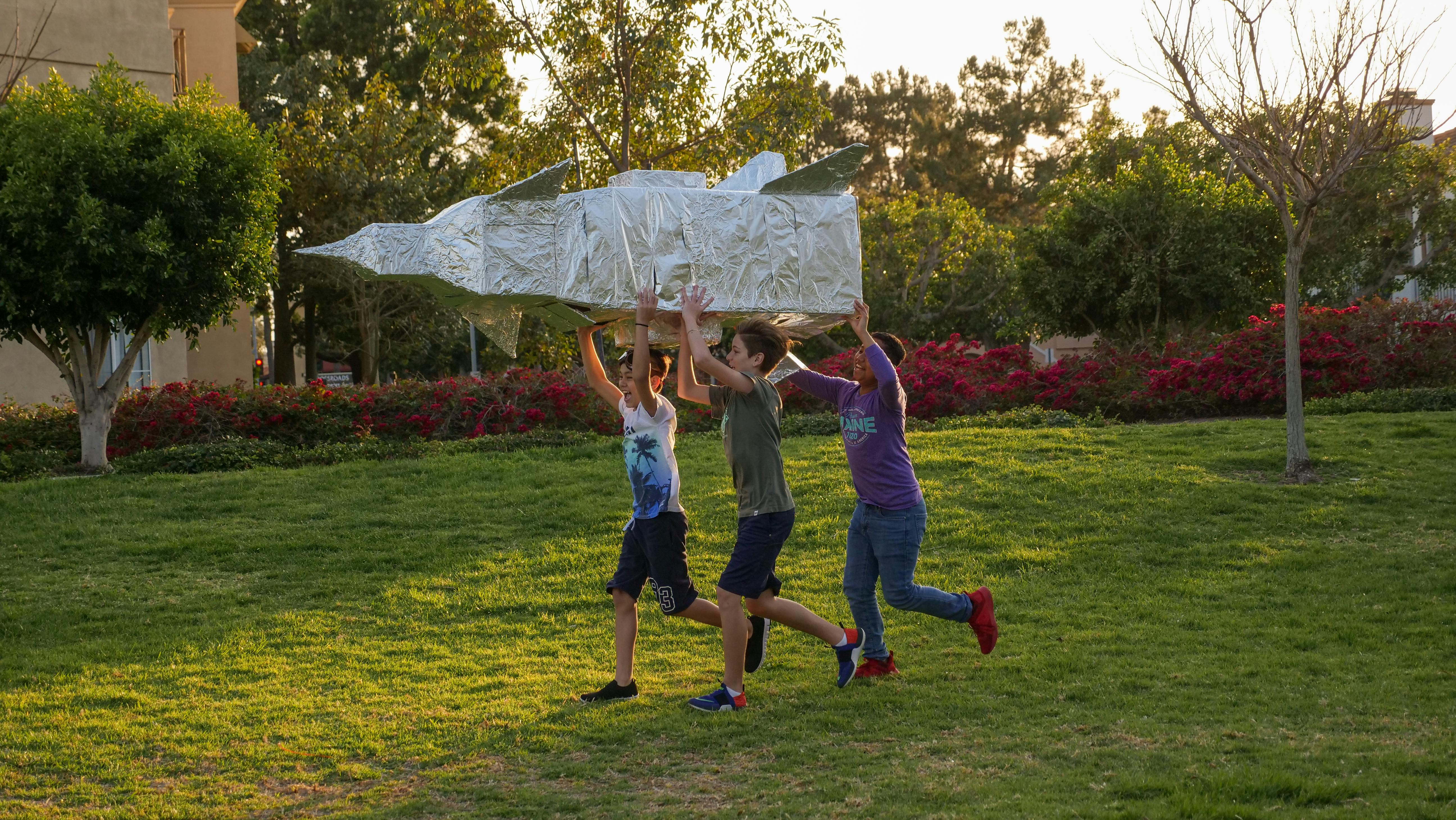In the winter of 2000 we spent our holidays in Kerala and Goa. We started by driving to Delhi and spent most of the next day at the Sarojni Nagar flea market looking for casual clothes and some serious talk and golgappa time. The early morning flight to Trivendrum was commanded by my first cousin. As a result, we were upgraded to business class and soon enjoyed all the goodness denied to lesser mortals. The real thrill was spending most of the flight in the cockpit and watching the clouds change shades and colors. From the cockpit, the takeoff and landing experience is truly unique. After a four hour flight we arrived at Trivendrum where another cousin of mine who is an Air Force Doctor was waiting to pick us up. Oh yes, from the air Trivendrum looks like a huge coconut tree. You can barely see the city. Coconut is an essential ingredient of the basic diet, each house has at least four trees. Our first night in Kerala was spent at Kovalam beach where of course the kids went crazy in the water and I went crazy looking at the variety of seafood on offer. There are dozens of sophisticated dhabas called huts displaying various types of raw seafood. You can choose what you want to eat and the same is prepared before you. I would like to have a grilled Kingfish. Prepared with the fiery Keralite masala it was a great success.
The next morning we went to the Padmanabhaswami temple which houses the reclining Vishnu and is said to have been erected in the early years of the Kaliyug. That’s 5000 years for you. I’m sure the carbon dating evidence doesn’t match the claim, but the thought of standing in such an old building is nice and sobering. However, the fact is that the construction of the present
The building is about a thousand years old and was made with the help of Chinese workers. His influence is unmistakable in sculpture. The most notable feature was the floor, which is made from vegetable dyes and egg white and feels like soft rubber. The main entrance of the temple, which is called a gopuram, is made entirely of powdered seashells and features incidents from Hindu mythology in paintings and sculptures.
Kanyakumari was next on the tour plan. We got an early start, which means 10am, with screaming kids, packing lunch and general chaos everywhere. Lots of fun nonetheless! So we went in the Sumo that we had rented. As soon as we crossed the city it started to rain. In the middle of the traffic there was a sudden squeal of brakes and an auto rickshaw crashed into the back of our Sumo. We go downstairs and are confronted by a timid looking Keralite guy. Unable to speak Malyalam I gestured with my hands ‘what happened?’ The guy just stuck out his tongue and smiled and it ended there as there wasn’t much damage to either vehicle.
The road to Kanyakumari is dotted with small towns and cities that one passes through so often that one never has the feeling of being on a highway. The empty spaces are lush green in classic Kerala style. Of course, the cloudy day made the trip pleasant. Our first stop was Padmanabhapuram, the capital of the Travancore kings. The current bloodline is of Verma royalty. The Keralite family system is matriarchal. Therefore, the King (poor thing) is not allowed to marry. But he can have as many concubines as he wants (lucky dog). Then it is the sister’s son who succeeds the King and the sister is considered as the Queen. The King’s palace at Padmanabhapuram is different from the opulent northern variety. It is the grandeur of the exquisite woodwork that captures the attention. The floors of some of the rooms have been done as I explained above. Even the King’s bed is made of some kind of wooden contraption that has medicinal properties. On the palace tour we had a quick lunch of aloo poories and headed off for Kanyakumari.
I had already been to Kanyakumari once in 1984, during one of the training courses while on probation at the Bank. In 16 years the face of the place has changed beyond recognition. What was once a quiet place, lazily receptive to curious visitors, has now become a concrete monster dotted with peddlers of curiosities at every step of the way. We quickly make our way to the ferry that takes one to Rock Memorial Island, where Swami Vivekanand is said to have once meditated. Right next to it is another island where a huge statue of the Tamil Perivayoor (hope I got the name right) has been erected. The Rock Memorial has lost some of its exclusivity after the installation of the statue. Quick pilgrimage on we headed back to Trivendrum. A few kilometers away is a place called Suchindran, which according to legend was rediscovered about 500 years ago. It houses a unique temple of multiple deities. The triumvirate of Hindu gods is represented by a single stone figure. There is also a 15-foot-tall statue of Hanuman, which devotees cover with offerings of fresh butter and betel leaves. There is another temple where it is believed that the rain god Indra comes every night to bathe. Why he needs to bathe at night baffles me? Probably the availability of water during the day is scarce.
However, the pièce de résistance are the pillars outside the sanctum sanctorum. Carved from individual blocks of stone, these pillars are a combination of smaller pillars, which are hollow from the inside. By striking them one by one, the seven basic musical notes can be distinctly heard. In another set are the different sounds of the drums. We were in time for the Aarti, so we stayed behind. They had this mechanical contraption that, when turned on, would beat the drum and cymbals together at a predetermined rate. It was an effective accompaniment to the Vedic chants of the black-robed priests and the din of conch shells and flutes. The experience is deeply moving. We went back to Trivendrum singing happily with the help of much-needed ale.
As per our original plan we were supposed to fly to Cochin but sage advice prevailed and we decided to drive the 500 km from Trivendrum covering Kerala in one go. As it turned out, it was an excellent choice, thanks to my cousin’s insistence. The first stop was a place called Varkala Beach. Well, one has to climb a cliff before going down a rocky path to the sea. The wind ruffles your hair and makes these crazy sounds and you have a beautiful view of the sea that stretches for endless miles. Calm and serene…reminds the movie “EK DOOJE KE LIYE”. The last scene where the star-crossed lovers die by falling from the rocks. Well this place was kind of like that… only I didn’t slip. From there we continue for about 15 kilometers by road and arrive at a fishing village by the sea. There was a small restaurant where we decided to eat. Since we were probably the first customers in the last few weeks, the Matre De grandly announced that the table will be ready in about an hour. Hunger prevailing over anger, we politely asked if a boat could be rented to cover the backwaters (backwater, by the way, is seawater blocked by land due to breaches in the shoreline or high tide spilling water onto land). The Matre De told us regally that this was just what he had in mind. He blew a whistle and Lo & Behold arrived a long boat to take hungry souls on an hour’s voyage. I suspect these guys had an arrangement where they would calmly delay the arrival if the food was not ready at the allotted time. Anyway, the backwater experience was not bad at all.
This particular location was full of the Portuguese Man of War, which to the uninitiated is a jellyfish. It is a poisonous creature but beautiful to look at, like half the fairer sex. So everyone sang merrily and had their photos taken and tried to forget their hunger pangs. The hour passed quickly, Matre De took pity, the boat returned, and the hungry party attacked for food and took no prisoners. Chicken, Dosas, Rice etc. disappeared at an alarming rate. The Matre De looked harried and panting, running up and down the kitchen. It served you well! From there to Cochin it was a long journey among the lush palm trees and green, green, green everywhere. The place comes to you. We reached Cochin in the late afternoon. Arrangements for our stay had been made at the headquarters of the Southern Naval Command. So everyone crashed after a leisurely Chinese meal in which a lobster was added to my considerable culinary repertoire. The next morning we took a quick tour of Cochin, which included a trip on the high seas to an island where, in lonely glory, stands the Buggati Palace. This place was built in the 18th century by a Dutch merchant and then taken over by the British who used it as a residence until independence. It is being restored to its former glory and would later be used as a hotel.
On December 29 we beat the clock to reach Cochin airport on time and found out that the flight was delayed by one hour. So we waited and waited…it was difficult as the anticipation of reaching Goa was strong and any delay was tolerated with irritation and boredom. Anyway, time passed, the plane arrived and we went to paradise. But more of that later.

